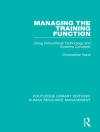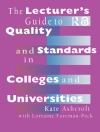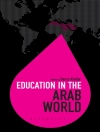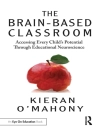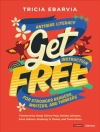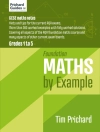Education is an important aspect of the environmental influences on autism and effective education can have a significant effect on outcome for those on the autism spectrum. This handbook is a definitive resource for reflective practitioners and researchers who wish to know and understand current views of the nature of autism and best practice in educational support. It explores the key concepts, debates and research areas in the field.
Daftar Isi
Editors’ Introduction – Rita Jordan
Part I: Learning Needs and Educational Responses
Chapter 1: Difference versus Disability: Implications of Characterisation of Autism for Education & Support – Damian Milton
Chapter 2: Particular Learning Needs of Individuals on the Autism Spectrum – Rita Jordan
Chapter 3: The History of Autism Education – Adam Feinstein
Chapter 4: Educational Structures: an International Perspective – Rita Jordan
Chapter 5: Systems and Politics of Provision – Suzanne Carrington and Beth Saggers
Chapter 6: Professional Development for those Working in Education with Students on the Autism Spectrum – Glenys Jones
Chapter 7a: Analysis of What Makes a Successful Professional in Autism – Hilde De Clercq
Chapter 7b: What Makes a Good Professional in Autism? A Parent’s Perspective – Maureen Bennie
Chapter 7c: What Makes a Successful Professional in Autism? School Education – A Lived Experience – Jeanette Purkis
Part II: Early Intervention, Education in Core Domains and Family Support
Chapter 8: Early Intervention – Jacqueline Roberts and Kate Simpson
Chapter 9: Approaches to Early Intervention for Children with Autism and Their Families – Laura J. Hall and Samuel L. Odom
Chapter 10: Building on Early Foundations into School: Fostering Socialization in Meaningful Socio-Cultural Contexts – Lakshmi Balasubramanian, Alexander Mario Blum and Pamela Wolfberg
Chapter 11: Building on Early Foundations into School: Communication and Language – Greg Pasco
Chapter 12: Thinking and Learning – Heather Mac Kenzie
Chapter 13: Focus on Families – Michaela Du Bay, Sallie Nowell, Linda R. Watson
Chapter 14: Transitions in the Early Years – Connie Wong
Part III: School-Based and Academic Education: Access & Support
Chapter 15: Curriculum Balance: Access to Academic Learning and the Therapeutic Curriculum – Whitney Griffin, Kara Hume, and Ann M. Sam
Chapter 16: Learning Supports for Students on the Autism Spectrum – Ann M. Sam and Kara Hume
Chapter 17: Individuals with Autism Spectrum Disorder and Skills for Living – Nancy Bagatell
Chapter 18: Fostering Peer Relationships and Shared Learning for Students with Autism Spectrum Disorders – Heartley B. Huber and Erik W. Carter
Chapter 19: Developing an Adaptive Behavior Curriculum across the Age and Ability Range – Michelle Lee, Kathryn Schweers & Rachel Loftin
Chapter 20: Language & Literacy – Christi Carnahan and Pamela Williamson
Chapter 21: Accessing a Broad and Relevant Curriculum – Emily C. Bouck & Jordan Shurr
Chapter 22a: A Curriculum to Support Students with Autism and Special Talents and Abilities – Trevor Clark
Chapter 22b: A Curriculum for the Dual Disability of Autism & Severe Intellectual Disability – Prithvi Perepa
Part IV: Collaborative Working in Education
Chapter 23: Autism, Health and Education: Models and Systems for Working Together – Tamara May, Charmaine Bernie, Suzy Marty, Rebecca Sutherland, Jacqueline Roberts and Katrina Williams
Chapter 24: Autism Health and Education: Professional Roles and Challenges – Charmaine Bernie, Rebecca Sutherland, Katrina Williams, Suzy Marty, Tamara May and Jacqueline Roberts
Chapter 25: Fostering Collaborative Family-School Relationships to Support Students on the Autism Spectrum – Rozanna Lilley
Chapter 26: Building Capacity in Education Systems – Jacqueline Roberts
Chapter 27: Educator Involvement in Research & Evaluation – Jessica Suhrheinrich, Sasha Zeedyk, Sarah Vejnoska and Aubyn Stahmer
Chapter 28a: Evidence-Based Practices with Apps Directed at Core Autism – Gerardo Herrera and Patricia Pérez-Fuster
Chapter 28b: Information and Communication Technologies as Educational Supports – Susan Hedges and Sue Fletcher-Watson
Part V: Education for Life and Barriers to Education
Chapter 29: Supporting Students in Postsecondary Education – Elizabeth Evans Getzel, Seb M. Prohn and Staci Carr
Chapter 30: Anxiety and Mental Health – Implications for Education – Tony Attwood
Chapter 31: Behavioural Issues and Supports – Andrew A. Mc Donnell, Michael Mc Creadie and Paul Dickinson
Chapter 32: Bullying Issues for Students on the Autism Spectrum and their Families – Verity Bottroff, Barbara Spears & Phillip Slee
Chapter 33: Overcoming Barriers to Educational Opportunities Post School – Andrea Mc Leod
Chapter 34a: Autism and Comorbidities: Autism Plus. Implications for Diagnosis, Prognosis and Interventions – Christopher Gillberg
Chapter 34b: Practical Effects of Co-morbidities and the Concept of Neurodiversity – Rita Jordan
Chapter 35a: Sexual Development and Gender Identity in Autism – Wenn Lawson
Chapter 35b: Cultural Issues in Education for those with Autism – Jorge Benavides-Rawson and Roy Richard Grinker
Chapter 36: Supportive Environments for Best Autism Practice – Jim Taylor
Part VI: Data Collection in Education and Measurement of Progress
Chapter 37: Setting and Evaluating Goals in Education – Kobe Vanroy and Peter Vermeulen
Chapter 38a: Feedback from Family Members on Outcomes and Experiences of Education for Individuals on the Autism Spectrum – Maureen Bennie
Chapter 38b: Measuring Success from School Stakeholders’ Perspectives – Jordan Mc Neil and Elizabeth O’Toole
Chapter 38c: Feedback from Individuals on the Autism Spectrum about the Experience & Outcome of Education – Emma Goodall
Chapter 39: Measuring Quality in Educational Programs for Students with Autism Spectrum Disorder – Suzanne Kucharczyk and Peggy Schaefer Whitby
Chapter 40: Data Collection in Education and Measurement of Progress – Lisa Ruble, Wing Hang Wong, & John Mc Grew
Chapter 41: Research in Autism Education: Current Issues and Future Directions – Brian A. Boyd, Jessica R. Dykstra Steinbrenner, Stephanie S. Reszka and Abigail Carroll
Chapter 42a: Tiers of Education: the Power of Collaborative Partnership in the Creation and Delivery of Professional Development for Autism Practitioners – Karen Guldberg
Chapter 42b: Crystal Gazing – Rita Jordan
Tentang Penulis
Jacqueline M. Roberts is the inaugural chair of Autism in the Autism Centre of Excellence (ACE) at Griffith University. Her background in autism stretches back over 30 years. She worked in service provision for children with autism as a teacher, speech pathologist, school principal, and senior manager. Prior to her appointment at Griffith, she worked as a consultant and held several part-time research appointments at different universities teaching autism studies and leading/managing research projects and professional development. Jacqueline is a director of the Australian Advisory Board on Autism providing input to the board on a national autism research agenda. She received the Asia Pacific Autism Conference (APAC) award for outstanding service to the autism community. In her current position as the director of the ACE, she is responsible for developing a research agenda focusing on enhancing outcomes for individuals with autism. The ACE also offers multidisciplinary postgraduate study and engages in consultancy with industry and government. In 2018, second edition of Understanding Autism. The Essential Guide for Parents was published, co-authored with professor Katrina Williams. In 2019, she edited The Sage Autism and Education Handbook with Professor Rita Jordan and Dr. Kara Hume.


